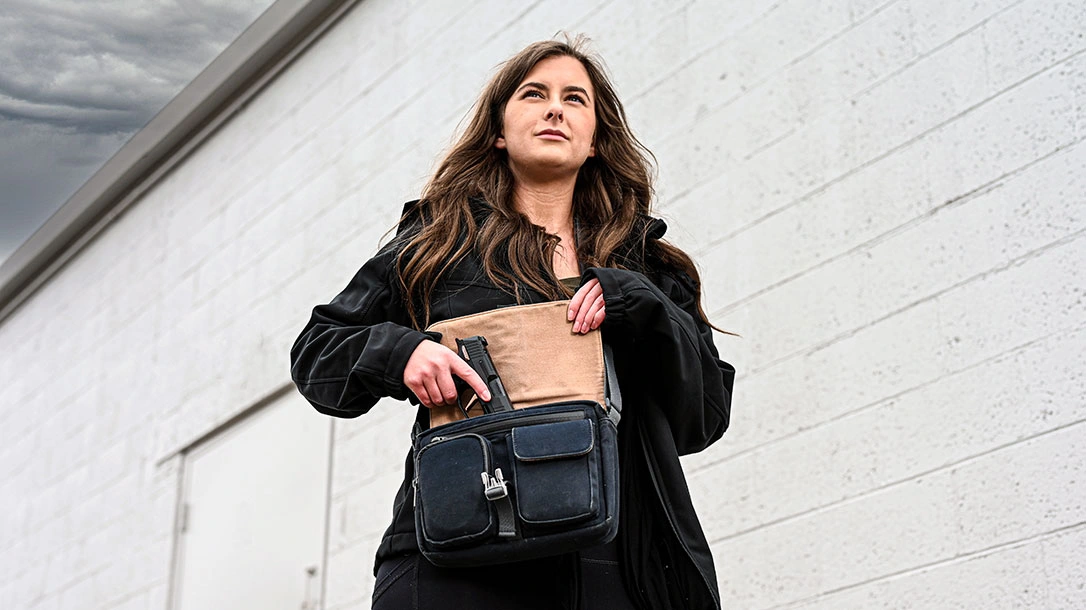The moment you decide to conceal carry a firearm, you are not just making a decision to value your life. You are making a choice to adapt to a new lifestyle. Carrying a gun will no doubt change the way you think, dress, and view the world around you. But this can be daunting if you are new to carrying a firearm. So, this women’s guide to concealed carry will help get you started properly and safely.
A Women’s Guide to Concealed Carry
If you are new to the world of concealment, this change can be jolting, overwhelming, and at times confusing. To make it easier and help you find the best method to carry, here are nine different ways to conceal your firearm.
Inside The Waistband
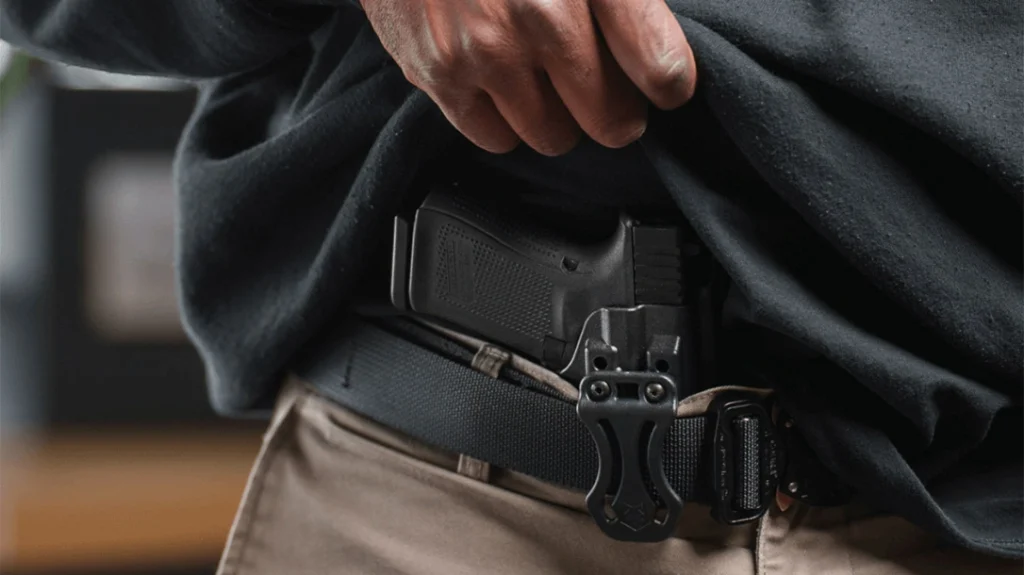
Advertisement — Continue Reading Below
One of the most popular ways to carry your firearm is with an inside the waistband holster. As the name suggests, this holster is designed to carry your firearm inside the waistband of your pants. It sits snugly between your clothing and body.
Inside the waistband holsters—commonly called IWB—are built with clips that attach onto your gun belt. Gun belts are made to support the weight of a firearm and are an important item every gun owner should own. IWB holsters are typically made of leather, nylon or kydex.
Since these holsters tuck your firearm against your body, a major benefit of this type of carry is concealment. Additionally, IWB holsters can be worn with any type of clothing without printing, provided the material is not too tight. Printing occurs when the shape of your firearm is visible through your clothing and is generally frowned upon in the firearm community.
Advertisement — Continue Reading Below
A drawback with this holster type is that it can restrict movement. Drawing from a seated position can become challenging, and even bending over can become uncomfortable with the weight of a holster and firearm against your body.
Outside the Waistband
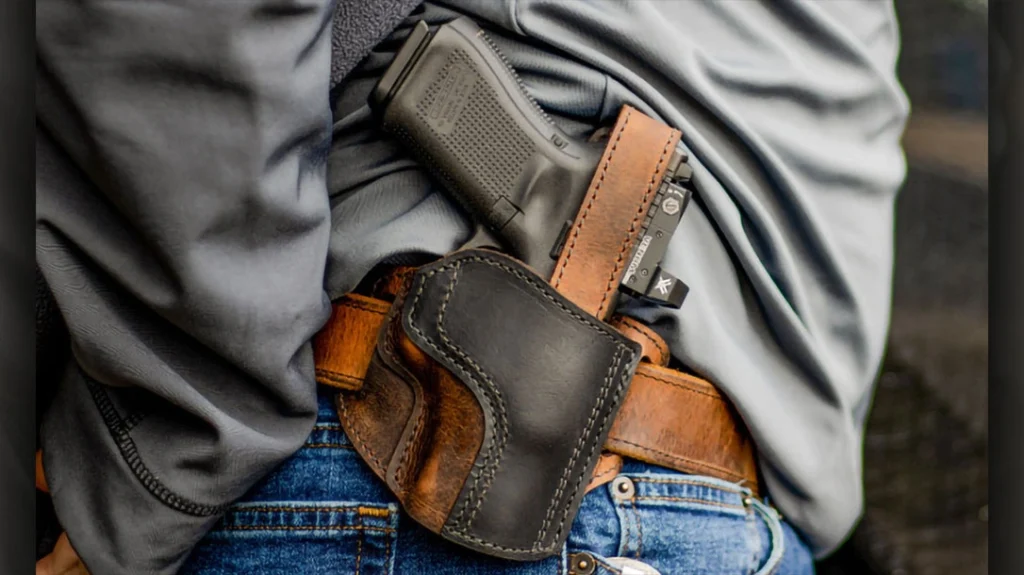
Outside the Waistband—referred to as OWB—is another common way to carry your firearm. Unlike IWB holsters, this holster is made to fit outside the waistband of your pants with either loops, clips, paddles, or slits to help attach the holster to your gun belt.
Advertisement — Continue Reading Below
Many people love this carry method because it is comfortable and allows you to quickly draw your firearm. However, a downside of this type of carry is that the clothing options you can wear are limited.
Since your holster and firearm are not tucked against your skin, loose shirts, jackets, and coats are almost a necessity for proper concealment.
Appendix Carry
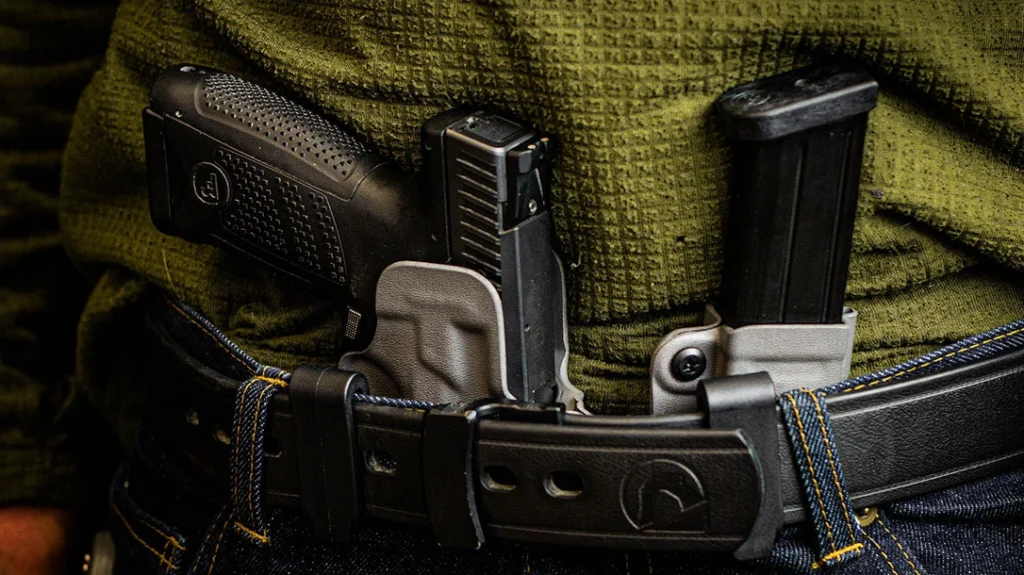
Advertisement — Continue Reading Below
Appendix carry is a carry method that takes place inside the waistband with your firearm holstered near the front of the body—commonly known as the appendix region. This position is well-loved because it allows for easier drawing based on the natural position of the drawing hand.
However, a disadvantage of this CCW method is that this position might not be the most comfortable depending on your body type, especially if you have a larger stomach. Additionally, individuals with standard-sized pistols could face difficulties with appendix carry.
With this holster, loose-fitting shirts are typically the best option to conceal your firearm.
Advertisement — Continue Reading Below
Ankle Carry
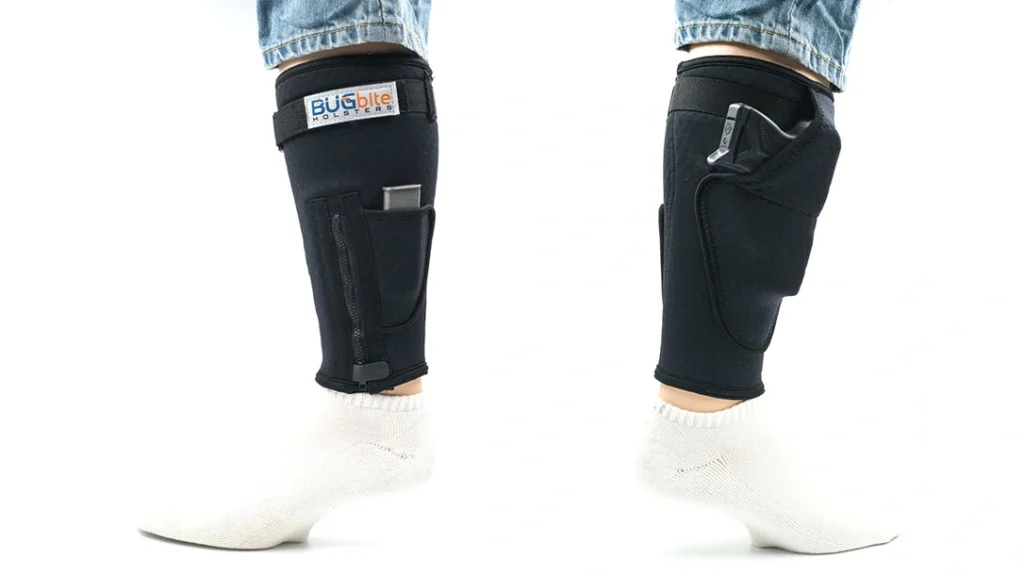
As the name implies, ankle carry involves strapping a holster to the inside of an individual’s ankle. Typically, right-handed individuals holster on their left ankle, while left-handed people holster on their right ankle. Depending on preference, some individuals prefer to carry on the outside of their ankle.
A drawback of this carry option is it is not ideal to draw your firearm while standing. It generally works much better when in a seated position.
Advertisement — Continue Reading Below
To draw, drop down onto your dominant knee and pull your pant leg up to expose your holster and firearm, where you can then quickly draw your tool. For inexperienced shooters, this method can take a while to get used to and requires practice.
Essentially, ankle holsters are better suited for backup carry than primary carry. Additionally, smaller firearms are ideal for this carry method.
Shoulder Holster
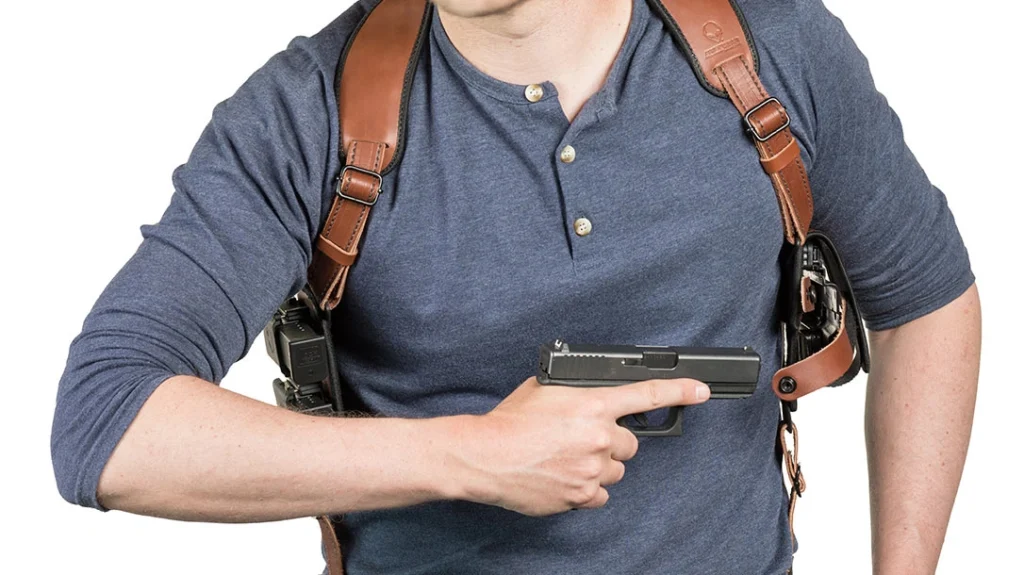
Advertisement — Continue Reading Below
A shoulder holster has two straps that fit over your shoulders with a holster tucked on either your left or right side. Based on the strap design, this method allows individuals to carry two firearms or a firearm and additional magazines. It’s important to note that a cover garment is necessary to properly conceal your firearm.
A benefit of shoulder holsters is that they distribute the weight of your firearm evenly across a larger area of your body. This makes this carry method extremely comfortable. Additionally, shoulder holsters are helpful for carrying full-size handguns but are also ideal for carrying smaller-sized pistols as well.
Pocket Carry
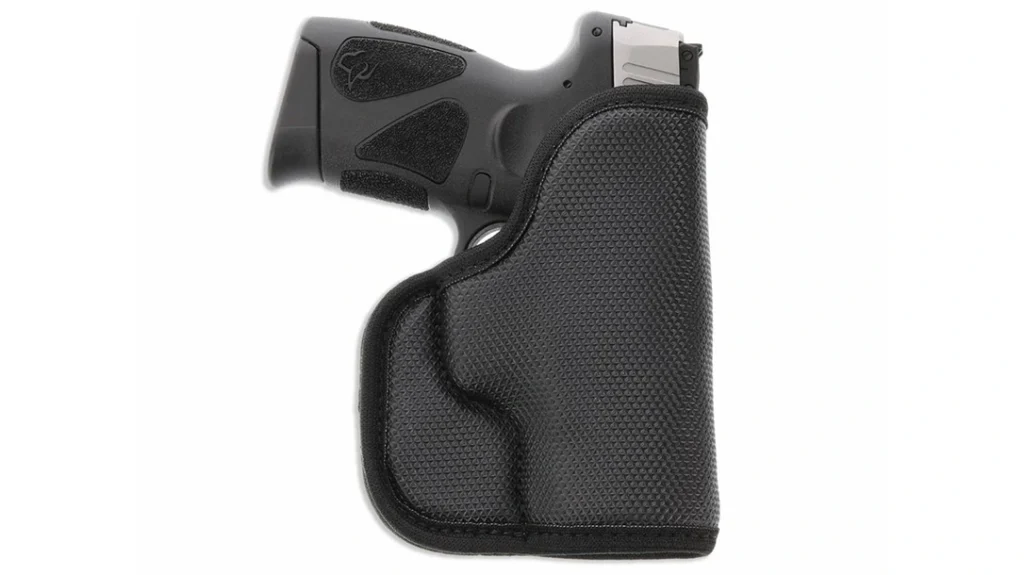
Advertisement — Continue Reading Below
Another common method of concealed carry is known as pocket carry. This holster will fit inside your pants pocket and provide complete concealment. When using this method, make sure your pocket does not contain your keys, wallet, or other miscellaneous items.
Essentially, this method is ideal for individuals who do not want the weight of their firearm on their waistband. Furthermore, when pocket-carrying, choosing a holster that fully protects the trigger is important to avoid accidental discharge.
Off Body Carry
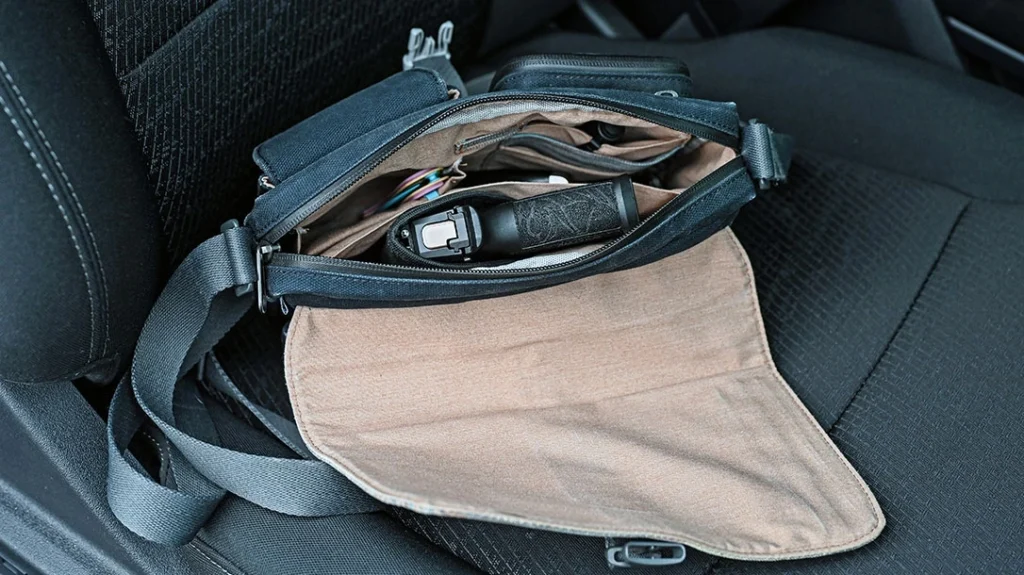
One of the most controversial types of carry is known as off-body carry. This type of carry involves a specially designed bag, purse, or backpack with a designated spot to holster your firearm.
These accessories are ideal for those who do not want to carry the weight of their firearm on their body. Unfortunately, they do have a few disadvantages, such as being unable to quickly draw your firearm. Not to mention the possibility of your bag getting stolen.
Bra Holsters
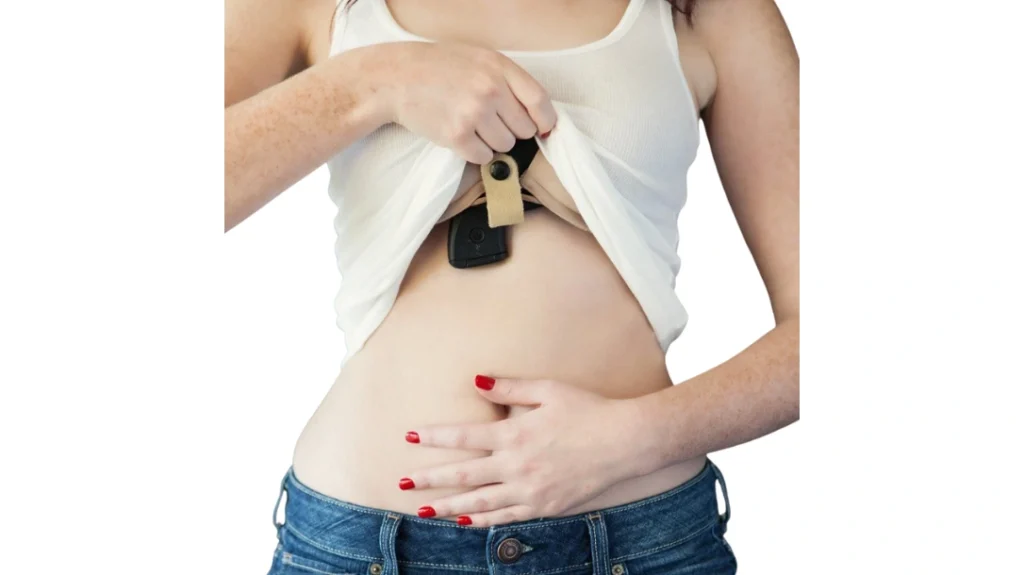
A less common CCW option is a bra holster. This holster attaches to a bra with a strap that tucks under the band. This carry method allows your firearm to face down or sideways across your chest.
Bra holsters are easy to conceal and easily accessible. However, it is important to note that they do not work for every woman. Certain body types and even bra types can make this carry method difficult and uncomfortable.
Belly Bands
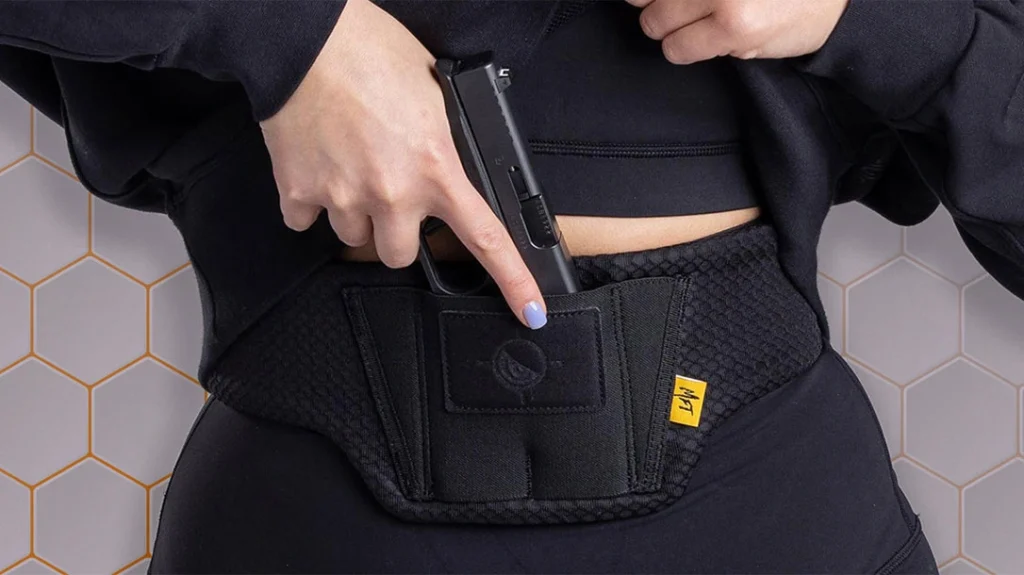
Belly band holsters are made of a stretchable band designed to wrap around your midsection. This CCW method is typically built with pockets that can hold items such as knives, extra magazines, and other small necessities.
Moreover, belly bands are able to remain discreet, comfortable, and can be worn in many different carry positions. However, it’s important to note that this holster can be difficult to draw from and will require practice to master.
Final Thoughts
Every CCW method will have its own advantages and disadvantages. However, it is up to you to figure out what works for you. Do your research. Find what feels comfortable, and do not be afraid to try different carry positions.
Above all, make sure you are carrying your firearm safely and responsibly. With a little trial and error, you will quickly find a CCW method that is perfect for you.
